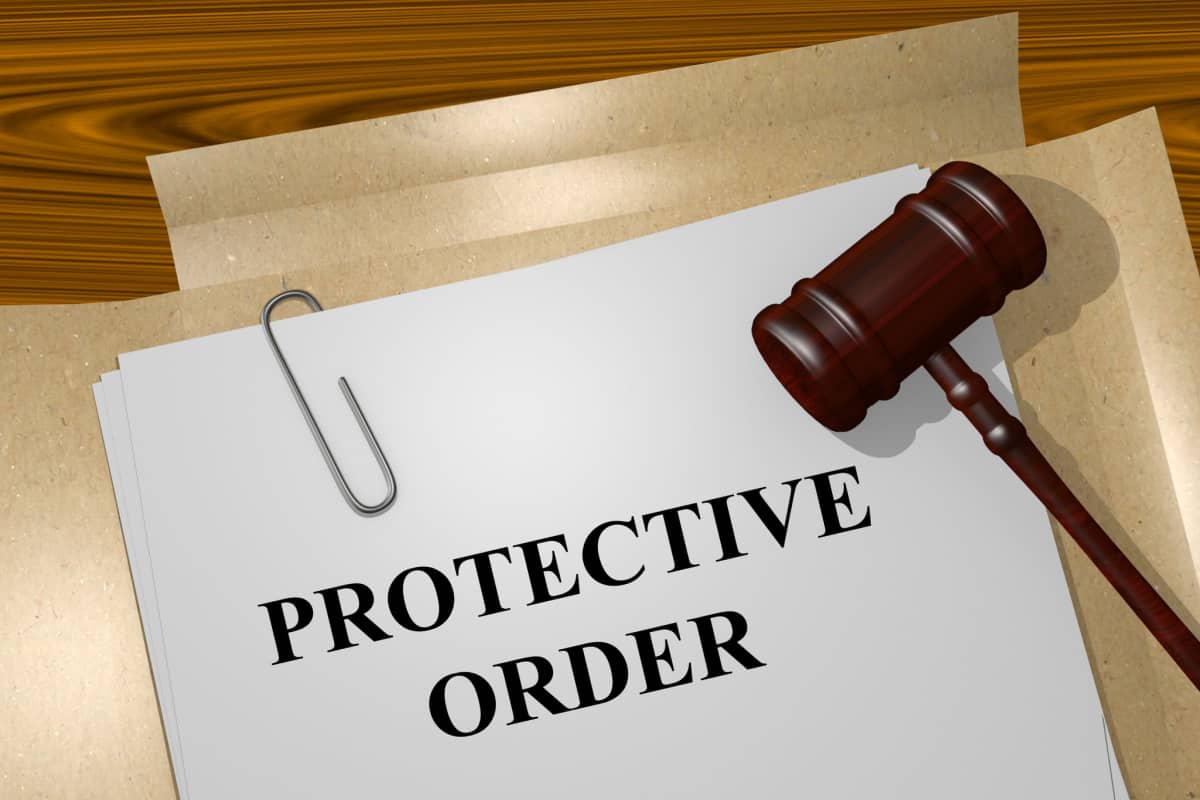Divorce is a life-altering event, and the legal process can be both emotionally draining and financially burdensome. In Texas, you can represent yourself and pursue a divorce without the help of a lawyer, which is referred to as a “pro se” divorce. While it can save you money, it’s crucial to understand the steps, legal requirements, and potential challenges of handling your divorce on your own.
This comprehensive guide will walk you through filing for a divorce without a lawyer in Texas. We’ll also answer five common questions to help you better understand the process and decide if handling a divorce is the right option for you.
Table of Contents
- Can You Get a Divorce Without a Lawyer in Texas?
- When Should You Consider Hiring a Lawyer?
- Step-by-Step Guide to Filing for Divorce Without a Lawyer in Texas
- When Should You Seek a Protective Order?
- 5 Common Questions About Divorce Without a Lawyer in Texas
- Is a Divorce Without a Lawyer Right for You?
Can You Get a Divorce Without a Lawyer in Texas?
The short answer is yes, it is possible to get a divorce without a lawyer in Texas. This is often called a “pro se” or “self-represented” divorce. However, going through the process with legal guidance can be safe, especially if your divorce involves significant assets, complex financial arrangements, or custody disputes.
Pro se divorce works best for couples who:
- Have a simple financial situation: If there are few assets or debts to divide, it can be easier to manage independently.
- Agree on the terms of the divorce: If you and your spouse can reach an amicable agreement on issues such as property division, child custody, and support, a pro se divorce might be the right option.
- Don’t have children: If no children are involved or custody arrangements are already in place and both parties agree, the divorce process is significantly simplified.
However, if you and your spouse disagree on critical issues or your financial situation is complicated (such as owning multiple properties, retirement accounts, or dealing with business ownership), representing yourself may not be the best choice. In these cases, it’s often wise to consult a lawyer to ensure you protect your rights.
When Should You Consider Hiring a Lawyer?

- Children are involved, and you and your spouse disagree on custody or child support.
- Your spouse has hired a lawyer to represent them, putting you at a disadvantage if you don’t have legal representation.
- Your financial situation is complicated, especially if you own property, businesses, or have retirement accounts.
- There is a history of domestic violence, abuse, or power imbalance in your relationship.
A lawyer can help protect your interests and ensure the final divorce agreement is fair and legally sound.
Step-by-Step Guide to Filing for Divorce Without a Lawyer in Texas
If you’ve decided to pursue a divorce without a lawyer, here’s a step-by-step guide to help you through the process.
Step 1: Determine Residency Requirements
Before filing for divorce in Texas, one or both spouses must meet the state’s residency requirements. To file for divorce in Texas:
- One of you must have lived in Texas for at least six months before filing for divorce.
- One of you must have lived in the county where you plan to file for at least 90 days before filing.
You can file for divorce in Texas if you meet these residency requirements.
Step 2: Obtain and Complete the Necessary Forms
You must obtain and fill out the appropriate divorce forms to start the divorce process. These forms are generally available online through resources like the Texas Law Help website or from your local county courthouse.
The primary forms you’ll need include:
- Original Petition for Divorce: This legal document starts the divorce process. It outlines your reasons for divorce and what you seek regarding property division, child custody, and support.
- Waiver of Service: If your spouse agrees to waive formal service of divorce papers, they can sign this document to save time. It allows you to avoid having to pay for formal service.
- Final Decree of Divorce: This is the document that finalizes your divorce. It includes all the details of your agreement with your spouse, such as how assets, debts, and property will be divided and child custody and support arrangements.

Types of Protective Orders
Protective orders can vary based on the urgency of the threat and the relationship between the parties involved. Below are the most common types:
These orders are issued immediately, often by a law enforcement officer or on an emergency basis, without the abuser present. They typically last for a short period (usually a few days), during which a more permanent hearing can be scheduled.
Temporary Protective Orders (TPOs)
A TPO is issued after an initial hearing and provides immediate protection to the petitioner. These orders can last up to several weeks and may include provisions such as requiring the abuser to leave the shared home, prohibiting contact, or surrendering firearms.
Permanent Protective Orders
After a full court hearing, a permanent protective order can be issued. These orders can last up to several years, depending on the severity of the situation, and can be renewed if necessary.
When Should You Seek a Protective Order?

Step 3: File the Original Petition for Divorce
Once you have filled out the Original Petition for Divorce, you must file it with your county’s district clerk’s office. Depending on the county’s rules, you can submit the forms by percounty’s mail.
A filing fee varies by county, typically between $250 and $350. If you cannot afford the filing fee, you can submit an Affidavit of Inability to Pay, requesting a waiver of the fees. The court will review your affidavit and determine if you qualify for a fee waiver.
After filing the petition, you will be assigned a case number and court, and your divorce process will officially begin.
Step 4: Serve Your Spouse
Texas law requires that your spouse be formally notified that you have filed for divorce. This is called the service of process. You cannot serve your spouse yourself, but you can hire a sheriff, constable, or private process server to do it for you.
You can skip this step if your spouse has agreed to sign the Waiver of Service. However, if they do not agree to waive service, you must ensure they are adequately served. Once they are served, the process server will file a Return of Service with the court to confirm that your spouse was notified.
Step 5: Wait for Your Spouse’s Response
Once your spouse receives the divorce papers, they have 20 days to file an official response. If they do not respond within this time frame, you may be able to proceed with a default divorce, meaning the court will likely grant the terms you requested in your petition.
If your spouse files a response, you must negotiate the terms of your divorce. This can include dividing property, determining child custody, and addressing spousal or child support obligations.
Step 6: Negotiate a Settlement Agreement
If your divorce is uncontested, you and your spouse agree on all the terms; you can draft a Final Decree of Divorce outlining your agreement. This document will include:
- How will your property and debts be divided?
- Child custody arrangements, including visitation schedules.
- Child support and medical support, based on Texas child support guidelines.
- Spousal support (if applicable).
Both you and your spouse must sign the Final Decree of Divorce. If you have children, the court will review the custody and support arrangements to ensure they comply with Texas law and are in the child’s best interest.
Step 7: Attend the Final Divorce Hearing

If the judge approves the terms, they will sign the decree, officially finalizing your divorce. Your divorce is complete at this point, and both parties must comply with the terms outlined in the decree.
5 Common Questions About Divorce Without a Lawyer in Texas
1. Is It Cheaper to Divorce Without a Lawyer?
Yes, divorcing without a lawyer can save you money, as you won’t have to pay attorney fees, which can range from hundreds to thousands of dollars, depending on the complexity of your case. However, you will still need to pay filing and possibly fees to serve your spouse. The primary costs in a pro se divorce are court-related fees, while attorney representation can significantly increase the total price.
It’s essential to weigh the potential cost savings against the risks. If you have a complex financial situation or custody issues, the cost of hiring a lawyer may be worth it to avoid costly mistakes in the future.
2. What Are the Risks of Divorcing Without a Lawyer?
While handling your divorce without a lawyer can save money, it also comes with risks. The most significant risk is making legal mistakes that can have long-term consequences. For example:
- You may inadvertently agree to an unfair division of assets or debts.
- You might miss critical legal deadlines, which can delay your divorce.
- You may need to fully understand the implications of custody or support agreements, which could lead to future disputes.
In addition, if your spouse has a lawyer, they may have a legal advantage in negotiations. It’s essential to be fully aware of your rights and the legal process before proceeding with a pro se divorce.
3. What Happens If My Spouse Does Not Agree to the Divorce?
The process can become more complicated if your spouse does not agree to the divorce. A contested divorce means that you and your spouse disagree on one or more critical issues, such as property division, child custody, or support.
In a contested divorce, the court may need to resolve these disputes, which can extend the divorce process and increase the cost. Representing yourself in a contested divorce can be challenging, as it may involve attending court hearings, filing motions, and presenting evidence. In such cases, hiring a lawyer may be advisable.
4. Can I Handle a Divorce With Children Without a Lawyer?
You can handle a divorce with children without a lawyer, but it requires extra care. Texas courts prioritize the child’s best interests when making custody and support decisions. You must work with your spouse to create a custody arrangement and calculate child support based on Texas guidelines.
It’s essential to ensure that your custody agreement complies with Texas law. The court will review your contract to ensure it is fair and in the child’s best interest. If you and your spouse disagree on custody or child support, the court may step in to resolve the issue, which can complicate a pro se divorce.
5. How Long Does a Divorce Without a Lawyer Take in Texas?
The timeline for a divorce without a lawyer in Texas depends on whether the divorce is contested or uncontested. Texas law requires a minimum 60-day waiting period for an uncontested divorce from the date you file the Original Petition for Divorce. This is the earliest a judge can finalize the divorce, even if both parties agree to the terms.
The process can take much longer for contested divorces. If you and your spouse cannot agree on key issues and the court needs to intervene, the divorce process can take several months or even more than a year, depending on the complexity of the case and the court’s schedule.
Is a Divorce Without a Lawyer Right for You?

At The Tess House Law Firm, we know every divorce is unique. Whether you’re navigating a pro se divorce or seeking skilled legal representation, our dedicated attorneys are here to support you every step of the way. Contact us today to schedule your consultation, let us help protect your rights and ensure your divorce is resolved fairly and efficiently.

